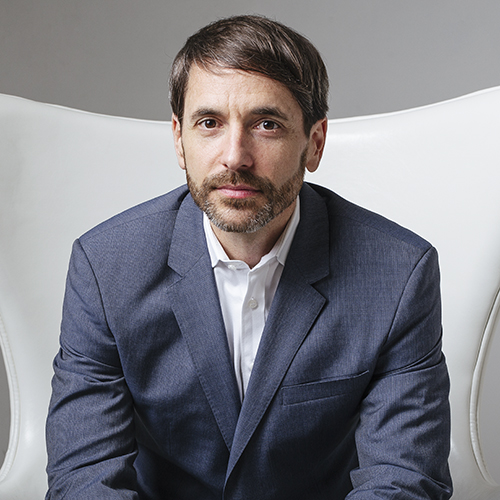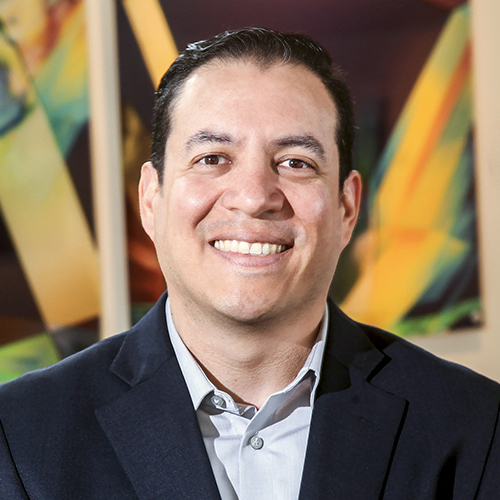|
Getting your Trinity Audio player ready...
|

When PepsiCo hired Salvador Padron in 2010, the company was taking a chance. He was to be a senior manager of multicultural insights and strategy, yet he had no insights experience.
Padron was actually a finance major at Tec de Monterrey in Mexico City because he always wanted to be a stockbroker.
“I’m not sure why,” Padron says. “Maybe because of how it was portrayed in the movies, but it looked like a really exciting career, full of emotion and passion.”
It wasn’t until after college that he took his first marketing role at Banamex, Mexico’s biggest financial institution. Still, Padron had little experience in marketing and none around insights when he applied for a job at PepsiCo. But he says the hiring manager believed in him, and he was offered a marketing position at the company.
Padron has since risen through the ranks at PepsiCo, and today he is the global head of Doritos and Cheetos marketing. And throughout his time at PepsiCo, he has worked on a variety of thrilling projects: developing the first Hispanic segmentation in the North America beverage division; launching 1893, a first mainstream premium cola product; and opening Kola House, Pepsi’s first restaurant and bar in New York City.
“This industry is unforgiving if you’re afraid to take risks, which is why working alongside Salvador is such a privilege for Motive,” says Matt Statman, CEO of ThinkMotive. “He doesn’t fear risks, he embraces them head on.”
Padron spoke with Hispanic Executive about his the intersections of finance and marketing, how leads his team, and more.
From your roles in finance, how did you discover your interest in marketing?
I really got excited about marketing when I realized the power this function has to make or break an initiative. I think we all intuitively know which brands do a good job gaining your loyalty and which don’t, but I had never stopped to think about how it’s done until I was in my first role in Banamex. Whether we were looking to rebrand our ATM network or promote money transfer products, every project had a marketing component that was critical to its success. You could have the best product in the market, but if you couldn’t communicate that to your customers in a unique and meaningful way, it didn’t really matter.
How do the skill sets for finance and marketing overlap?
I think the main commonality is numbers. Marketing is actually a very numbers-driven discipline. Many of the tools used to understand your market, like data from Nielsen or Millward Brown, are based on numbers, statistics, and projections. Social and digital media are heavy in data as well as marketing mix models that help you understand the effectivity of your campaigns. Being number savvy helps you ask the right questions and find insights that might not be evident, so I feel I’m very lucky to be able to bring these two disciplines together as it helps me assess and find solutions to challenges in a more holistic manner.
Before you joined PepsiCo, you had a very entrepreneurial role with Viva Chapata. Can you explain how that came to be and what you learned from that experience?
For years, I dreamed of having my own business. I’d even written a business plan, but I didn’t have the financial support to quit my job and dedicate myself to getting it off the ground. That was until I met my business partner, who was willing to back the venture financially but didn’t have the time necessary to run it. I decided to leave Banamex, and we went into business together and launched Viva Chapata, a mobile Mexican fast food franchise where the main objective was to make high-end Mexican food available to the masses. This was one of the most fulfilling experiences I’ve had in my career to date. I learned how much goes into launching something from scratch, and every day brought a new challenge, whether it was learning to run a commercial kitchen or defining the ideal supply chain. I also learned how hard it is to build your reputation from scratch based solely on the quality of your product and communications like menus, promotions, and flyers. When I was at Banamex, every supplier would take my call and consider working with us. People would even vie for our business. That wasn’t the case with Viva Chapata, and I learned a lot from the challenges that came with establishing ourselves and building a viable business.
How have you grown since working for PepsiCo?
Tremendously. I’m incredibly grateful for all the opportunities PepsiCo has given me to learn and grow with the company. One thing that I love about PepsiCo is that they invest in people, which results in assignments that stretch you in ways you never imagined. I was a finance major with experience in banking and entrepreneurship, so my résumé was interesting, but the CPG industry wasn’t a natural fit. PepsiCo brought me in because they were looking for someone with multicultural experience, but more importantly, the hiring manager, who became a mentor for me, believed in me and gave me an opportunity. I helped build a multicultural insights team, even though I had no prior insights expertise. While incredibly challenging, this ended up becoming a true passion for me, and I was able to learn from a great team many new skills that helped me ultimately lead the insights team for Pepsi in the US, which was a daunting task given the size and complexity of the business. From that role, I transitioned back into marketing to lead the brand Pepsi business in the US and then to my current role leading global marketing for two of the largest snacks brands in our portfolio, Doritos and Cheetos. I couldn’t have done any of the above without the support of an amazing team and managers that believed in me, so I’ll always be grateful to all of them and for this journey.
As a leader, you describe yourself as collaborative. How do you engage and empower your team?
I believe that people are the most valuable part of an organization, so I’ve always made sure I spend enough time understanding, supporting, and developing people I work with. I try to live my professional life based on three principles: collaboration, transparency, and empowerment.
What do you think makes a positive work environment?
I think there are three key elements to a positive work environment: Having a manager that sets clear and ambitious goals for the team while empowering them with the right tools and platforms. Having a motivated team delivering impactful results in a timely manner. And being in a role where you’re constantly challenged.
What are you most excited to tackle next?
I’ve only been working for our snacks division for a few months, so I’m really looking forward to continuing to learn this important side of the business before considering anything new. I’m fortunate to lead two of my favorite brands and to see them growing tremendously around the world, so I’m confident this experience is one I’ll treasure in my career.
One of the areas of the company where I can see myself longer term is nutrition, as I have a ton of respect for our team leading that business and firmly believe in the potential we have in that space, but then, it’s the unexpected turns in my career path that have led to some great experiences, so I’ll hold off on making any predictions for now.

